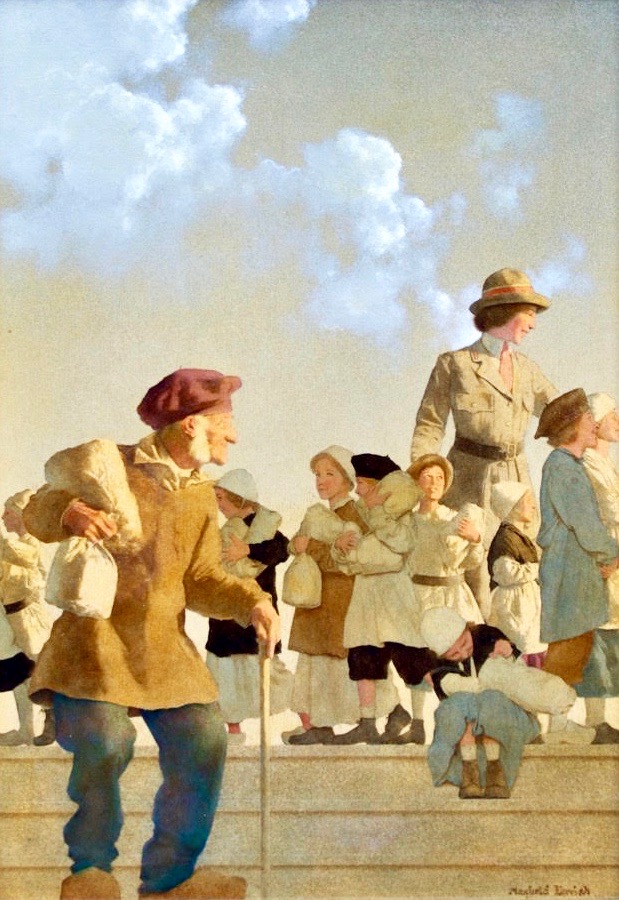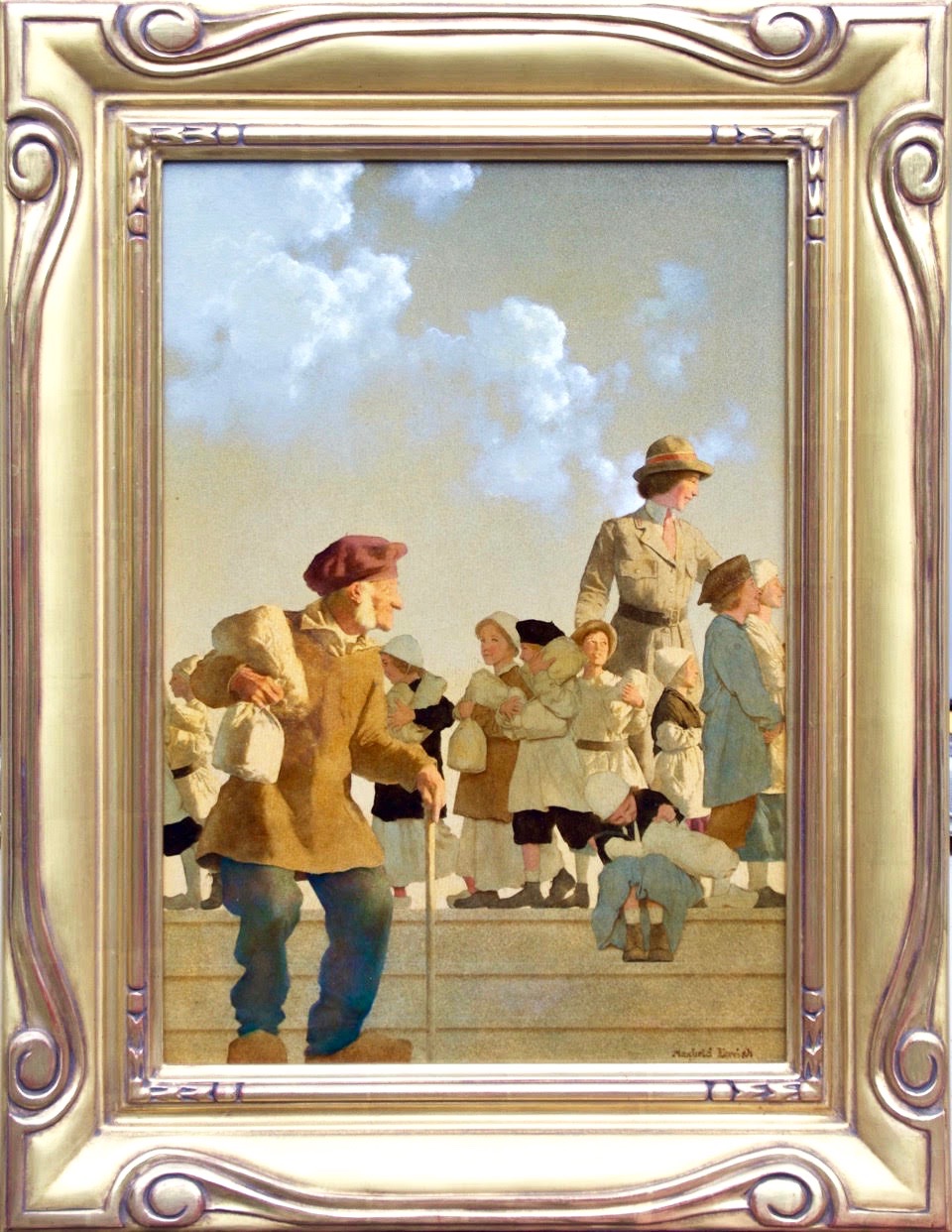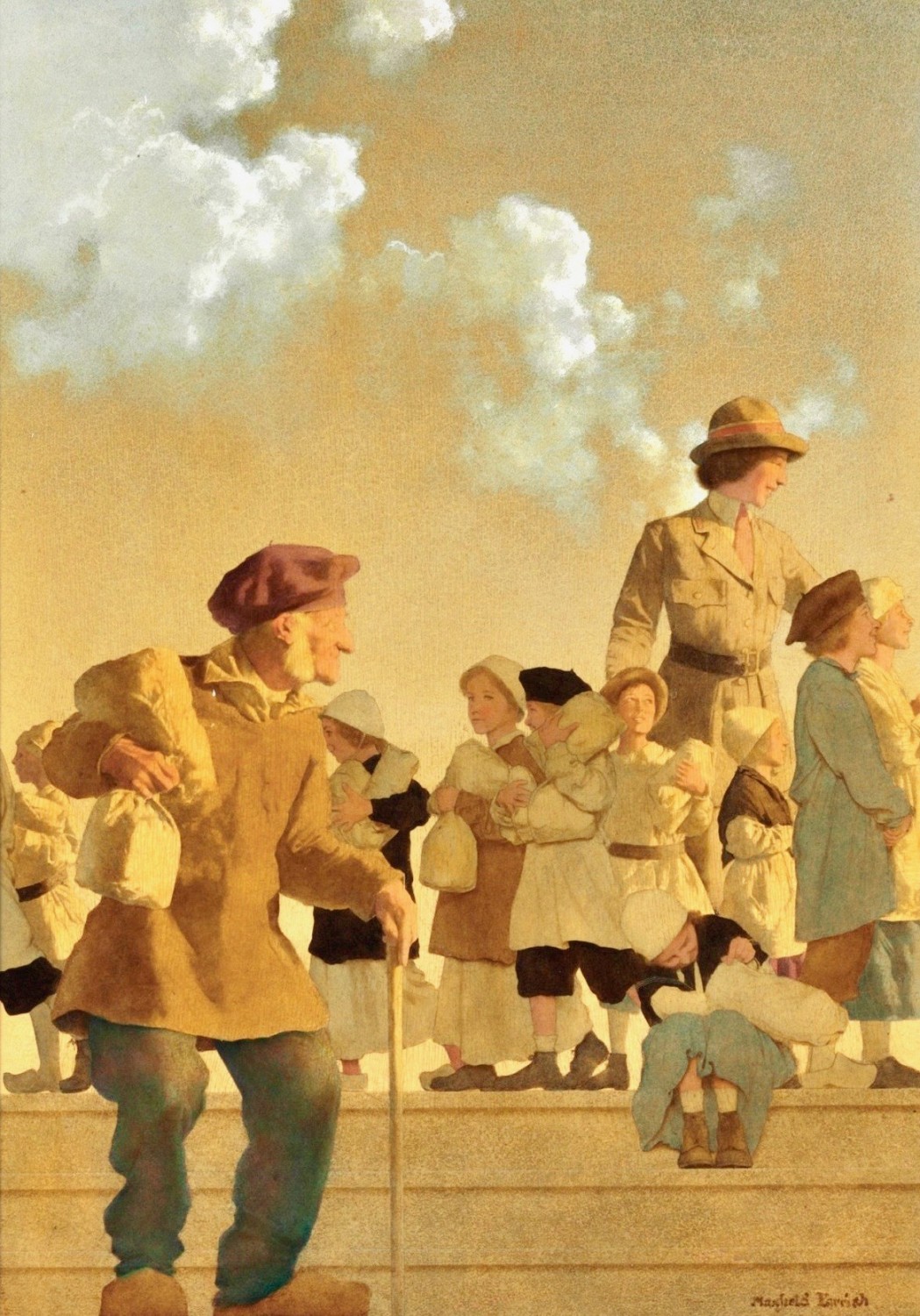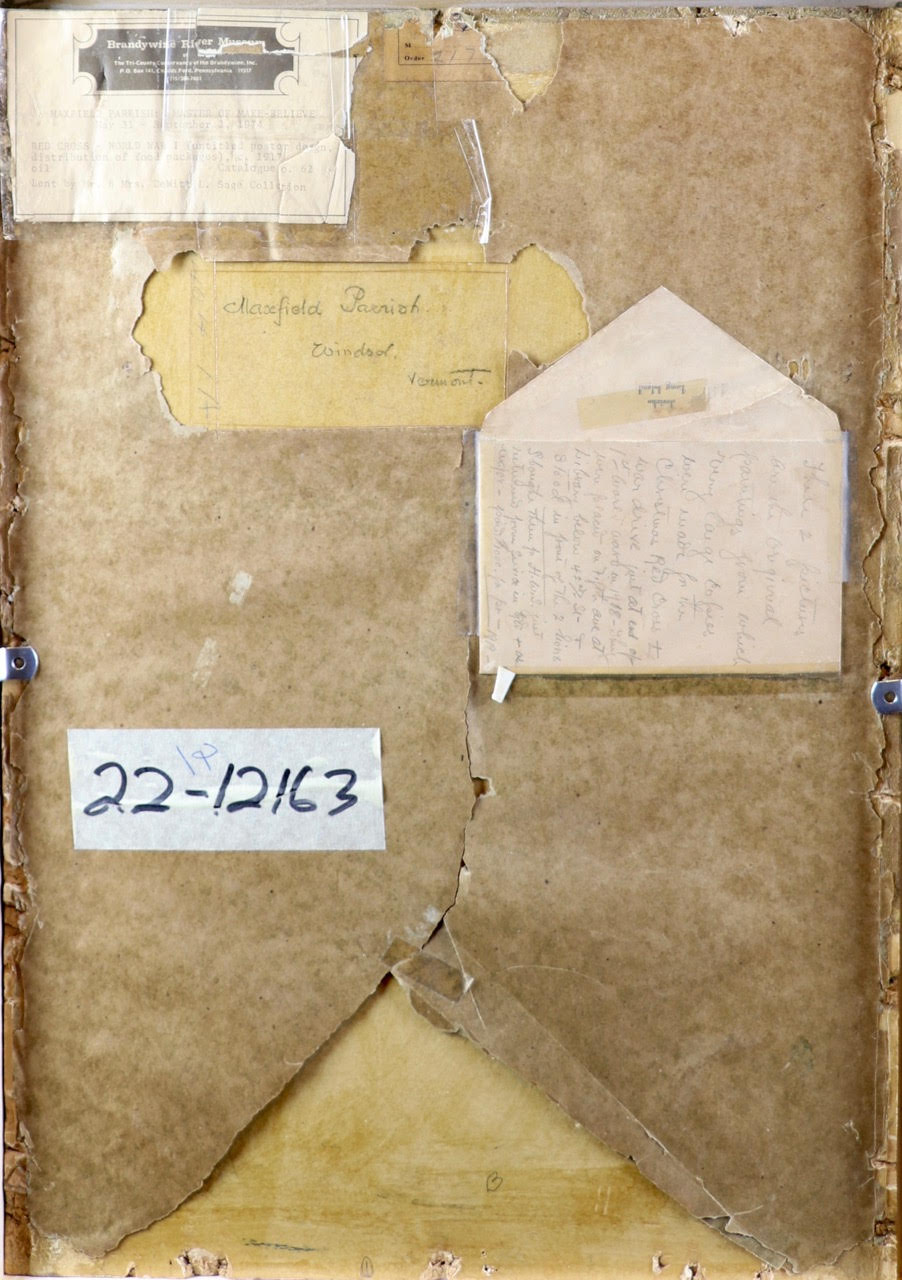"Original Illustration for The Red Cross" Lot no. 3691
By Maxfield Parrish (1870-1966)
1918 (Estimated)
19.875" x 14.00" Each Panel
Oil on Board
Signed Lower Right
REQUEST PRICE
PURCHASE REQUEST
1 of a 4 Part Illustration used as a promotional poster
Poster for The Red Cross—Watching for Submarines and Distributing Food: A Four-Panel Work
each upper panel, signed 'Maxfield Parrish/Windsor./Vermont.' (on the reverse); each lower panel, signed 'Maxfield Parrish' (lower right)
Literature:
A.E. Gallatin, Art and the Great War, New York, 1919, n.p., illustrated.
"Brief Mention of New Books," The Bookman, vol. L, no. 6, February 1920, p. ii.
C. Ludwig, Maxfield Parrish, New York, 1973, pp. 111, 114, 213, fig. 82, illustrated (as Untitled Poster for Red Cross).
M.S. Sweeney, Maxfield Parrish Prints, Dublin, New Hampshire, 1974, p. 26.
P. Rice, Classical America IV, New York, 1977, p. 224, illustrated.
A.G. Smith, Maxfield Parrish: Master of Make-Believe, exhibition catalogue, Washington, D.C., 2005, p. 75.
EXHIBITIONS
Chadds Ford, Pennsylvania, Brandywine River Museum, Maxfield Parrish: Master of Make-Believe, June 1-September 2, 1974, p. 33, nos. 62-63 (as Red Cross - World War I (Untitled Poster Design)).
Other half of the original four panel illustration:
https://www.illustratedgallery.com/artwork/original/3692/by-maxfield-parrish/
Explore related art collections: Military/Soldiers / Advertisements / $100,000 & Above / Poster Illustrations
See all original artwork by Maxfield Parrish
ABOUT THE ARTIST
To behold the work of American illustrator Maxfield Parrish (1870–1966) is to enter into a fantasy world of ethereal beauty. Whether a book illustration, magazine cover, painting or mural commission, his flawlessly rendered subjects and fairy-tale settings are infused with a sense of mythical beauty unmatched by any artist in his wake
A Unique Approach
The magic and sublime spirit of Parrish’s work is the result of his unique approach to painting. He began with a white base which served to illuminate the image from the first layer up through to the last. Repeated layering of varnish on the surface of the pigment heightened the vibrancy of his colors, yielding shades like the famous "Parrish blue," a rich cobalt that is now indelibly associated with the artist. This singular technique allowed Parrish to convey textures and patterns with the intense detail and saturation of color that became trademarks of his best works.
This May, a museum-quality collection of 11 works by Maxfield Parrish pay tribute to the superior talent and unique vision of this seminal artist. A leading highlight of the collection is Sing a Song of Six Pence, measuring over 13 feet long and painted as a mural for the hotel bar of the Sherman House in Chicago, Illinois. Parrish began his career painting a mural of Old King Cole for the University of Pennsylvania in 1894, and was immediately recognized for his ability to render exquisite detail on a monumental scale. He often projected photographic images and then painted directly on the surface of his murals, which may account for the veracity of the features displayed in this work.







